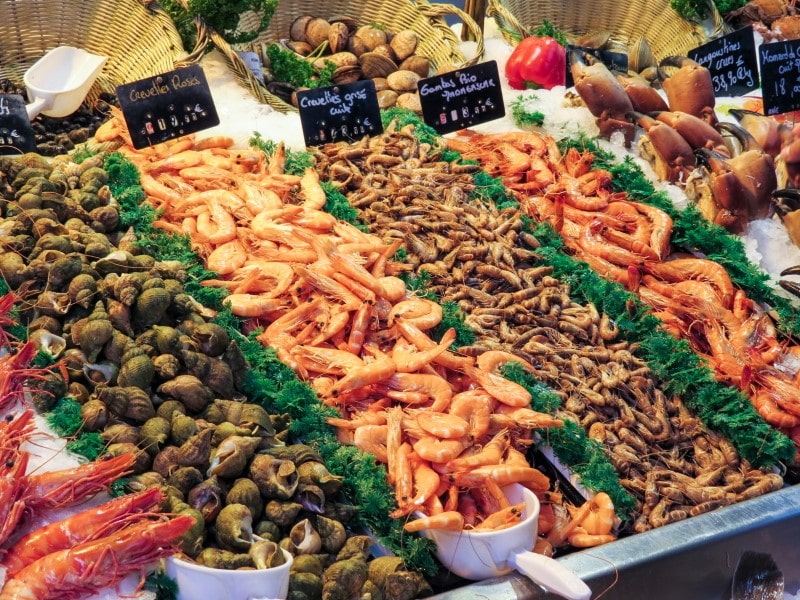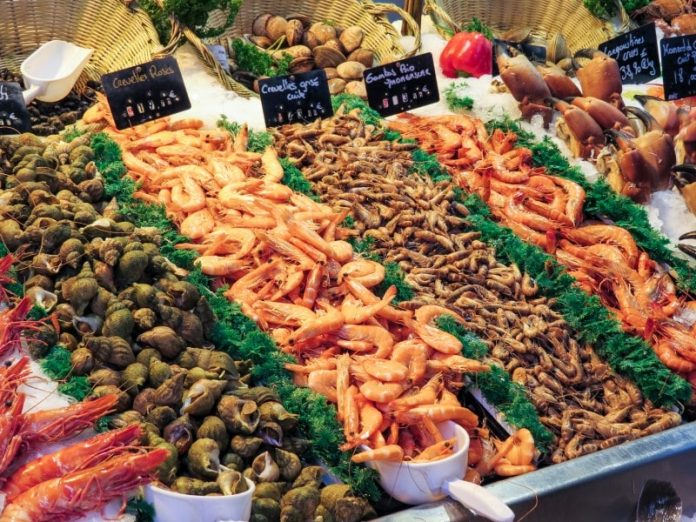It’s the hazy height of summer and the perfect time to fire up the barbecue to grill delicious morsels of meat, fish, seafood… and fruit and vegetables too! Here’s the French Department for Agriculture’s monthly guide to what’s at its seasonal best in France right now…
VEGETABLES
Cornichons are from the same family as cucumbers and can be eaten on their own as an aperitif, or as part of a salad. Varieties to look out for include the Fin de Meaux, the Vert petit de Paris and the Amélioré de Bourbonne.
Tomatoes come in all shapes and sizes – round, bumpy, yellow, striped… When buying, choose those bearing the Tomate de France label, which is a guarantee of quality and respect for the environment.
Peppers are also great right now – juicy red ones, sweet yellow ones and peppery green ones all work fantastically well grilled on the barbecue. In 2020, France produced an impressive 29,160 tonnes of peppers.
FISH
Langoustines live buried in the mud and sand of the seabed and in France are mainly fished in Brittany. They are sold in three sizes:
Size 1: less than 20 langoustines per kilo;
Size 2: between 21 and 30 langoustines per kilo;
Size 3: between 31 and 40 langoustines per kilo.
Ideally, buy them alive and prepare them yourself to guarantee freshness.
Herring lives in abundance in the cold waters of the north and can be eaten simply steamed with herbs, or salted and smoked in a cocktail salad, or in a potato and beetroot soup.

MEAT
Pork is ideal for barbecuing: the breast with a few herbs, the loin on a skewer, the ribs marinated in advance or basted while cooking with a honey and cider sauce. And let’s not forget the cold cuts, such as the Label Rouge ‘superior pure pork andouillette’.
As for cured meats, they’re great for picnics. Look out in particular for Bigorre AOP black pork coppa from Occitanie: the animals are raised in the open air and fed on acorns and chestnuts which give the meat aromas of dried fruits.
When shopping keep your eyes peeled for the Viande de porc français logo, which certifies that the animals were born, raised, slaughtered and processed in France, and that the farming method is respectful of the environment and the animals.
FRUITS
Blink and you’ll miss it – it’s raspberry season. Raspberries come from a wild bramble native to the mountainous areas of Western Europe but these days are cultivated on the ground or in greenhouses in Auvergne-Rhône-Alpes and Nouvelle-Aquitaine.
Blueberries are harvested by hand, mainly in Ardèche, Lozère, the Vosges mountains, the Alps and in Brittany. These blue-purple berries, with their floral flavour, are fantastic in an egg custard.








Am coming in a few weeks. This was great to read…very timely.
Why can’t you buy flat mushrooms, suitable for stuffing in France? I’m sure they’d sell well if they were on sale.
Could you tell me where I can find out more about the products that use a ‘farming method … respectful of the environment and the animals’, e.g. the pork you mention. Thank you.